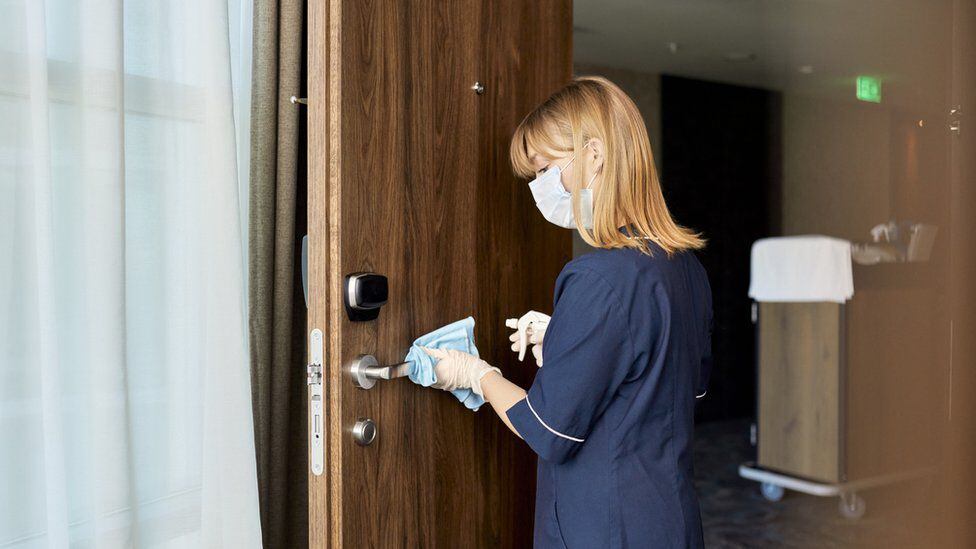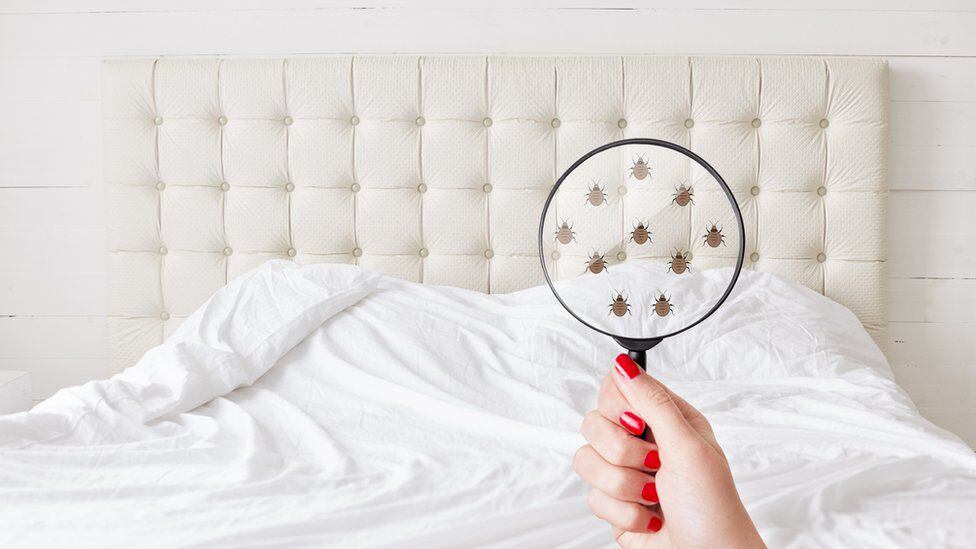For most of us, staying in a hotel is something we do out of necessity -like on a business trip- or something we look forward to as part of a vacation or excursion.
But what would you think if I told you that there is a good chance that your hotel room, regardless of how it looks, is not that clean. Even if it’s an expensive room, that doesn’t mean it’s less dirty.
Look: Who is Shou Zi Chew, the enigmatic CEO of TikTok with the challenge of defending the company before the US Congress.
In fact, whoever was there before you will have deposited bacteria, fungi and viruses on all furniture, carpets, curtains and surfaces. What’s left of those germ deposits depends on how efficiently hotel staff clean your room.
And let’s be honest, what a hotel considers clean may differ from your idea of cleanliness.
Generally, evaluation of hotel room cleanliness is based on observations and smell, not on the invisible microbiology of the space, which is where infection risks lie. So let’s delve into the world of germs, bugs, and viruses to find out what might be lurking and where.
Before you even get to the room, think about the elevator buttons of the hotel as a place where germs accumulate. These keys are pressed all the time by many people who can pass their germs onto this surface or come in contact with germs that are already there.
The communal door handles They can be similar in terms of the presence of germs, unless they are cleaned regularly.
Wash your hands or use a sanitizer after touching a handle, before touching your face or eating or drinking.
The most common infections that people get in hotel rooms are stomach viruses (diarrhea and vomiting) along with respiratory virusessuch as colds and pneumonia, as well as, of course, covid-19.
Toilets and bathrooms tend to be cleaned more thoroughly than the rest in a hotel room and are often the least bacteriologically colonized environments.
If the glass in the bathroom isn’t disposable, wash it before using it (body wash or shampoo is effective for this), as you can never be sure it’s been cleaned properly. The bathroom doors they can also be colonized by pathogens from dirty hands or rags.
Watch out for the remote
The bed, sheets, and pillows can also harbor some unwanted visitors. A 2020 study found that after a presymptomatic Covid-19 patient occupied a hotel room, there was significant viral contamination on many surfaces, with particularly high levels on kitchen surfaces. sheets, pillowcase and duvet cover.
While sheets and pillowcases are more likely to be changed between occupants, bedspreads may not be changed, meaning these fabrics can become just as much invisible reservoirs for pathogens as your toilet seat.
As in some cases the sheets are not always changed between one visitor and another, it is better that you bring your own.
Something that is least thought about is the desk, the bedside tables, the telephone, the kettle, the coffee machine, the light switches or the television remote control. These objects are not always cleaned when there is a change of occupants.

Viruses like the norovirus They can remain in their infectious form for days on hard surfaces, as can Covid-19, and the typical interval between occupants in a room is usually less than 12 hours.
Fabric or upholstered items such as cushions, chairs, and drapes are also difficult to clean and may not be disinfected beyond spot removal. So washing your hands after handling them might be a good idea.
Uninvited Visitors
As if these germs and dirty surfaces weren’t enough, you also have to think about the Bedbugs. These blood-sucking insects are experts at hiding in tight and small spaces, remaining inactive and without feeding for months.
Small spaces include the cracks and crevices in luggage, mattresses, and bedding. Bed bugs are widespread throughout Europe, Africa, the United States and Asia, and are often found in hotels. And just because a room looks and smells clean doesn’t mean there aren’t bed bugs lurking.
Fortunately, bed bug bites are unlikely to transmit a disease to you, but areas of the bite can become inflamed and infected.
To detect the presence of bed bugs, look for reddish bites on the skin and if there are blood stains on the sheets. These are signs of an active infestation (use an antiseptic cream on the bites).

Other signs can be found on the mattress, behind the headboard, and inside drawers and cupboards: brown stains can be remnants of feces, bed bug skin has a silvery-brown appearance, and live bed bugs are brown in color and are usually between one and seven millimeters long.
Let the hotel know if you think there are bedbugs in your room. And to avoid taking them with you when you leave, carefully clean your clothes and suitcases before opening them at home.
Since higher category hotels tend to have more frequent use of rooms, a more expensive room in a five-star hotel does not necessarily mean more cleaningas room cleaning costs reduce profit margins.
So wherever you stay, take a pack of antiseptic wipes with you and use them on the hard surfaces in your room.
Also, wash or sanitize your hands frequently, especially before eating or drinking anything. And wear slippers or thick socks to avoid walking barefoot on the hotel’s carpets, which are also often dirty.
And after all this, enjoy your stay.
*Primrose Freestone is Professor of Clinical Microbiology at the University of Leicester, UK.
Source: Elcomercio
I am Jack Morton and I work in 24 News Recorder. I mostly cover world news and I have also authored 24 news recorder. I find this work highly interesting and it allows me to keep up with current events happening around the world.

:quality(75)/cloudfront-us-east-1.images.arcpublishing.com/elcomercio/GI2TCNJNGAZS2MRTKQYDAORSGU.jpg)

:quality(75)/cloudfront-us-east-1.images.arcpublishing.com/elcomercio/NLALQHZCRFA47IE7WOMGEKL4VQ.jpg)
:quality(75)/cloudfront-us-east-1.images.arcpublishing.com/elcomercio/Q2EOPBKOSVG3BDSDJRSUBRXUZY.jpg)

:quality(75)/cloudfront-us-east-1.images.arcpublishing.com/elcomercio/GQZDCNJNGA2C2MJSKQ2TMORUGI.jpg)
